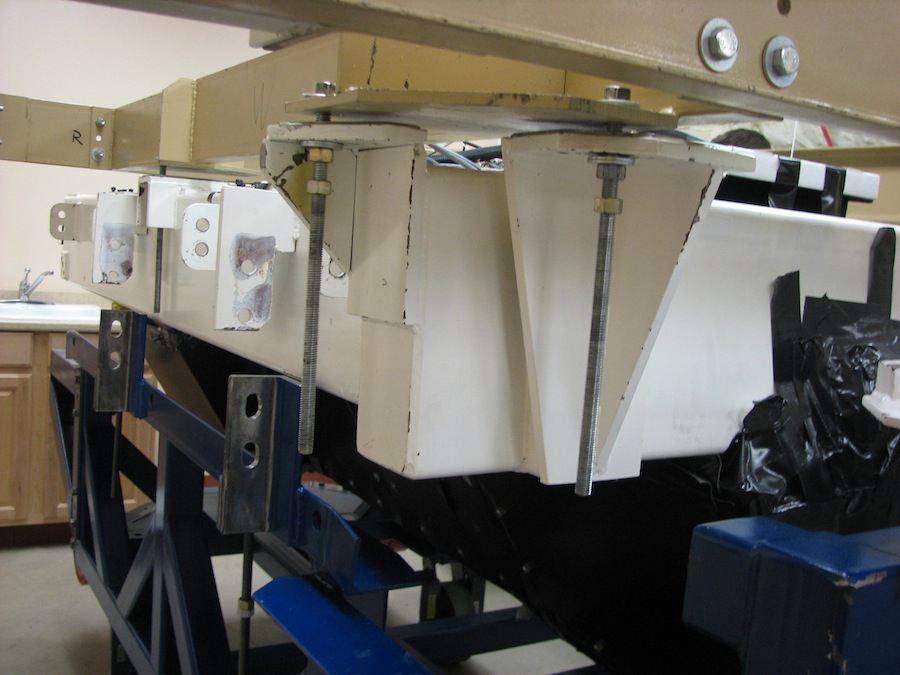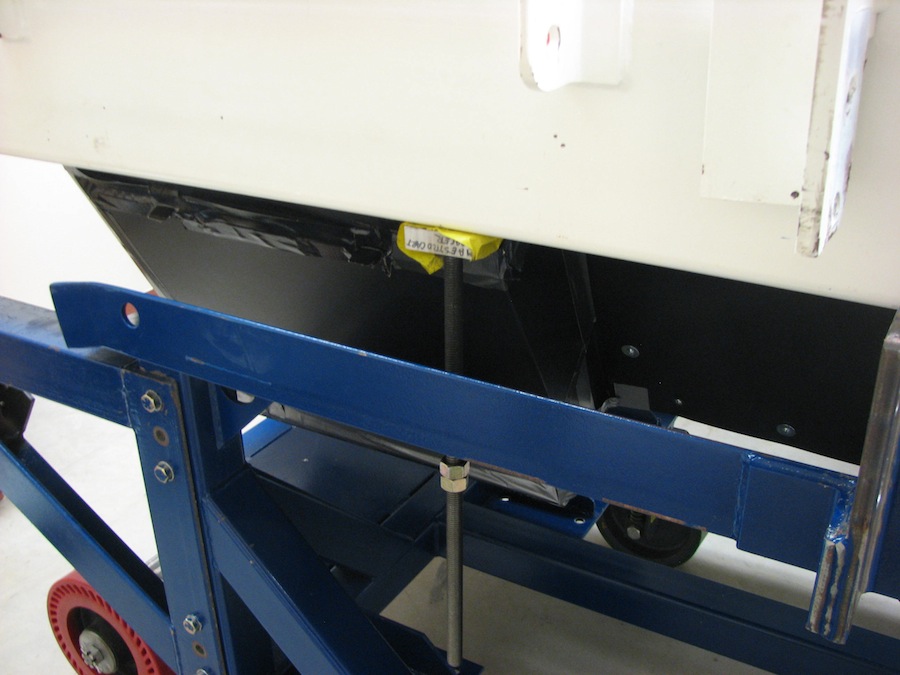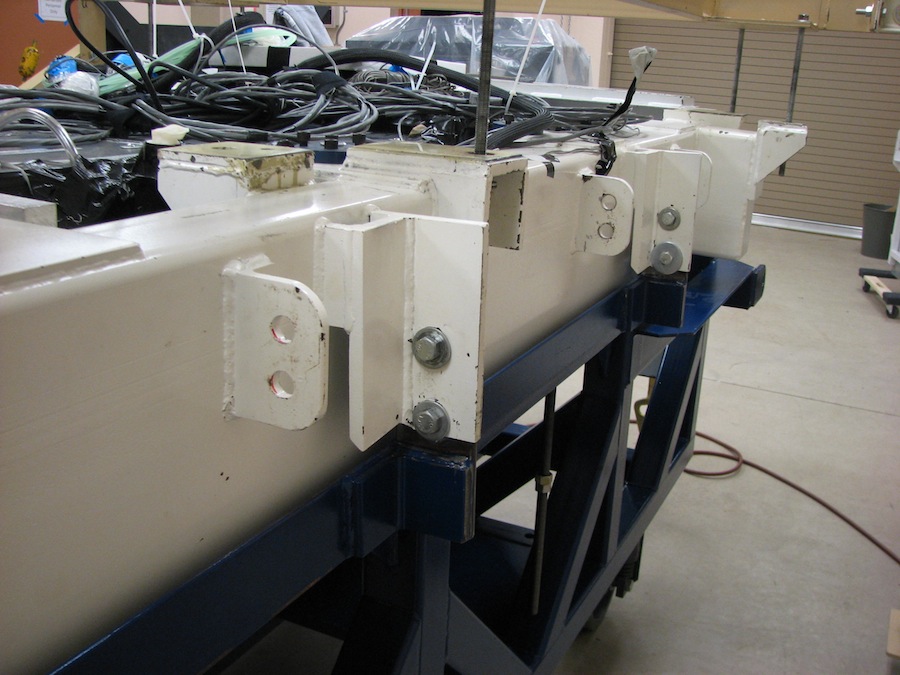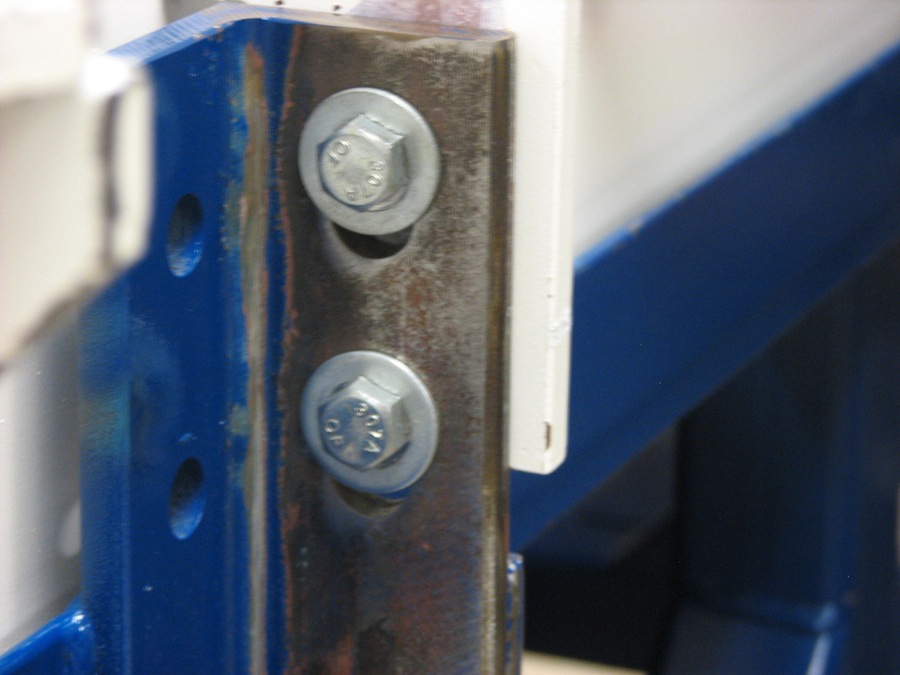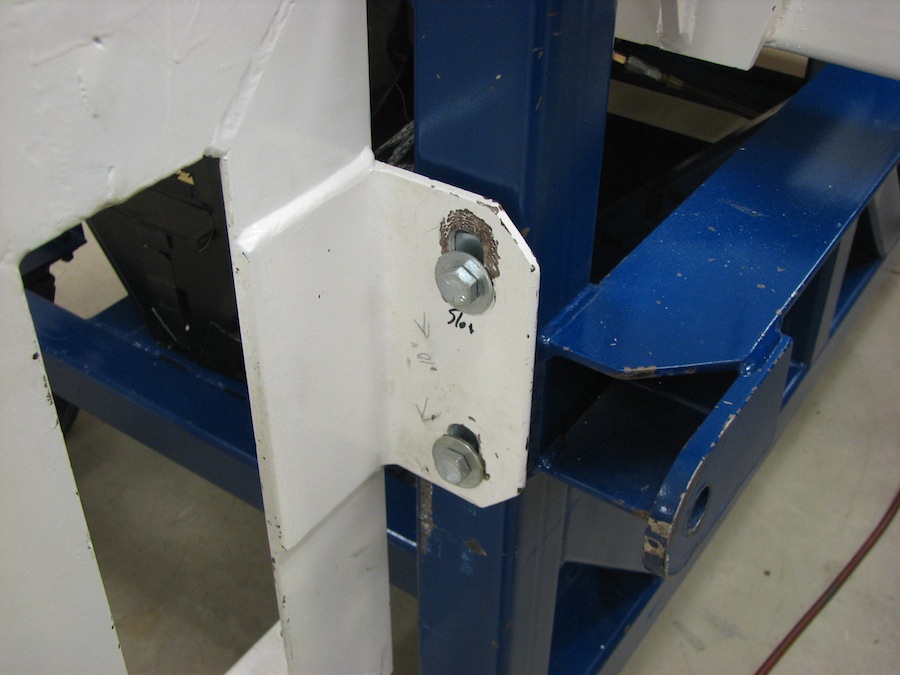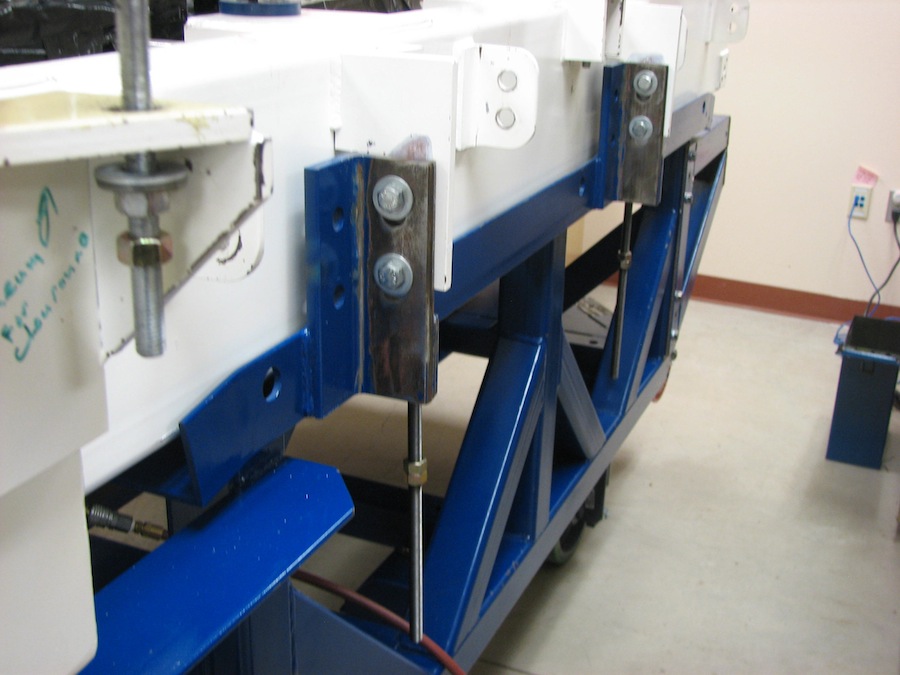MAESTRO PROCEDURE
Raising the spectrograph from the alignment frame to the
cart
Last Revision: April 18, 2013, Jill Bechtold; June 14,
2013, Richard Green
This document in WORD
This document in PDF
Introduction
For working on the spectrograph off the telescope, we constructed a tan, steel
“alignment frame” which allows us to take the spectrograph off the
cart and hang it as if it were on the telescope. We
investigated using the NOAO Flex Rig for this purpose (see photo archive), but
decided not to use it for a number of reasons. The
MAESTRO alignment frame is modular, and can be disassembled for transport. Detailed photos of the alignment frame
to aid assembly and disassembly are in the photo archive, along with notes.
General Notes
1.
Read the procedure through before starting, to remind
yourself about what needs to be done. Review “Tour
of the MAESTRO spectrograph” to remind yourself of terminology.
2. The underlying principle to keep in mind
during this procedure is that MAESTRO is quite asymmetric, and will tip
easily. The use of nuts and allthread enables the
raising and lowering of MAESTRO in a controlled manner, without bending the
spectrograph body, or tipping.
3. Make sure cables are safely stowed out of
the way so they will not be pinched.
4. Having 4 people makes the tedious part of
the procedure go quickly. One person can do it by
themselves if necessary, but at least two people are recommended. Two people can complete this procedure in about 2.5 hours.
Equipment needed
1. Two ¾ inch wrenches for each person.
One of these should have a ratchet to make the procedure easier. MAESTRO has purchased several ¾ inch wrenches and ratchets
for this procedure.
2. One inch driver.
3. Hardware to attach spectrograph to the cart. These should be left attached to the cart when the
spectrograph is on the alignment frame:
¾ inch
bolts, each 2 inches+
¾ inch
washers
¾ inch
nuts
4. Six lengths of 5/8 inch allthread attached with nuts and
washers in all but the two inner weldment attachment locations (see
photo). These usually are attached to the alignment
frame, and travel with it.
5. Level
6. 12-inch ruler, or similar. One
for each person is optimal.
Procedure
1. Roll the cart under the
alignment frame. Roughly align the cart to match up the eight attachment
wings on the spectrograph with the corresponding structures on the alignment
frame. There is only one way the spectrograph will fit
on the cart: the cart and the alignment frame are both
labeled with “Grating side” and “Dewar Side” so you can go in the right way.
BE CAREFUL NOT TO SMASH THE CART INTO THE ALIGNMENT
FRAME.
Note that the cart
moves easily, and changes direction easily IF it is
moving. If it is not moving, the cart is heavy and
changing direction of the wheels is very difficult. Those of you who have
driven a car without power steering will understand how to move the cart
naturally.
The 4 spectrograph weldment attachment wings should be to the grating side of
the cart attachment wings.
2. Attach
allthread to the spectrograph and alignment frame, in six of the eight
spectrograph weldment wings; the two wings on the inner
side of the weldment are unreachable. Double nuts and washers should be used
at all locations. These usually
are attached to the alignment frame, and travel with it.
See attached photos.
3. There are 4 yellow blocks of
aluminum on the cart, which push the spectrograph UP.
These are used to relieve pressure on the bottom of the
spectrograph. Use the 1 inch wrench to loosen/tighten
the nuts associated with these.
4. Loosen and remove the 8 bolts
that attach the spectrograph to the cart. When the spectrograph is
raised, reattach these to the cart for safe-keeping.
5. With personnel at each of the 4 corner
locations, slowly raise the spectrograph
weldment from the alignment frame in ½ turn increments simultaneously.
The current approach is to raise the pushing blocks first with the 1-inch
wrenches. It is (obviously) helpful to mark one face of each of the double nuts
on the allthread rods to be able to count revolutions. After ~2 revolutions,
hand tighten the double nuts on the allthread supporting the spectrograph when
hanging from the alignment frame.
6. After each 1 inch of movement,
check to see that the spectrograph is staying level, and tension is
remaining on the dewar end to keep the weldment level.
Measure the distance between the weldment and alignment frame at all
points with a ruler. Turn individual allthread nuts as needed to bring all
spectrograph attachment points to constant distance from the frame.
7. Continue raising by ½ turn increments.
8. Wiggle cart and remove when the top of the spectrograph weldment
is secure against the alignment frame. (Wrench tighten for final securing of
the spectrograph to the frame.)
PHOTOS. Click on photo for
enlargement.
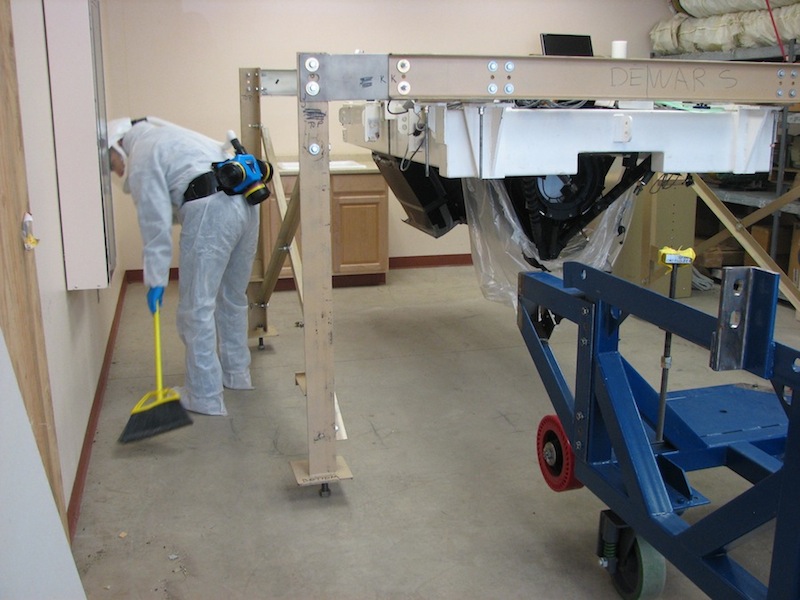
|
MAESTRO hanging from the tan
alignment frame, in the common building lab at the MMT.
|

|
White spectrograph weldment is hanging from the
tan alignment frame by allthreads during raising/lowering of
spectrograph from the cart. Two of 6 total
allthreads are labeled.
|
